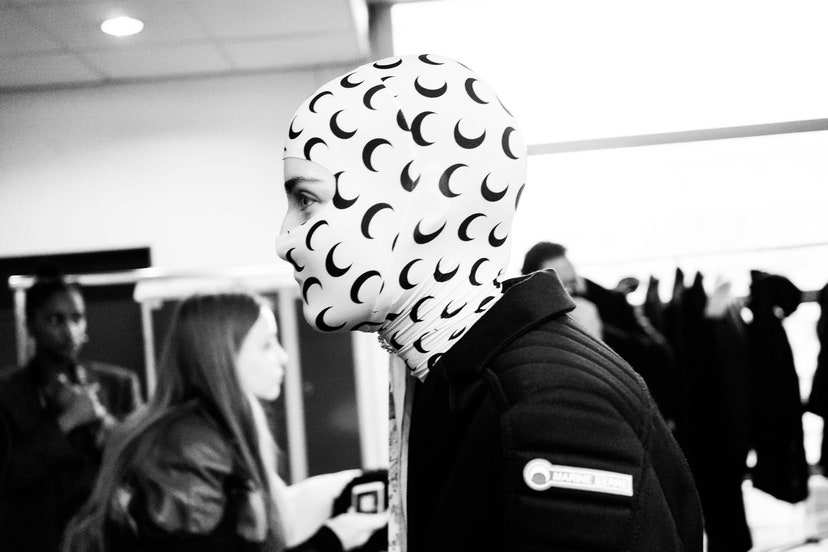Easily recognizable logos and a loyal customer base are becoming more important than the next collection for brands.

Summary of content:
- Creating opportunities for customer exploration
- The importance of community and accessibility
When consumers see a pair of sneakers with a swoosh logo on them, they immediately know they are produced by Nike. Similarly, with clothing and leather goods, it’s easy to recognize the intertwined double Cs on a Chanel handbag or leather jacket as the brand’s. By constantly seeing these recognizable images, customers have begun to form a connection between these classic logos and specific brands.
Not only are big companies investing in building a powerful brand, but emerging fashion designers like Marine Serre, Telfar, and Alyx by Matthew Williams—those who have made a strong impact in the Instagram era—are also successful in creating logos that clearly express the personality of their fashion brands.
However, achieving this is not easy. According to Marty Neumeier from Liquid Agency, often referred to as the ‘brandfather’ of Silicon Valley, whose clients include Adobe and Apple, “You really want to be so different that no one can copy what you’re doing.” This can be quite challenging in the fashion industry where everything can easily be discarded and copied.
The alignment between brand and logo is when the logo reflects the purpose of the brand. According to Neumeier, “It’s the one thing that will get you through all the issues you’re going to face, it will also attract the best employees and keep you focused on what’s important.” He believes, “You can’t skip this step: ask yourself why you’re doing this.”
Creating opportunities for customer exploration Marine Serre has captivated the fashion industry since launching her brand in 2016. In just three years, the former Balenciaga intern’s brand has generated profits and opened over 120 stores worldwide. The revenue of the 2017 LVMH Prize winner has consistently doubled each season since its launch.
Suzanne Pendlebury, Head of Women’s Ready-to-Wear Buying at MatchesFashion.com, says, “This brand is extremely popular with fashion enthusiasts.” MatchesFashion.com was the first to select this brand for the Spring/Summer 2018 collection.
Serre’s success is partly attributed to the small crescent moon pattern that appears throughout her collection. Although the celestial motif has cultural and religious correlations, it is most closely associated with Islam. And Serre has used the crescent moon based on this context.
Serre says, “I want to create a new, rich, and diverse unified style and culture, where I absorb all the different cultural nuances but express them in a completely new way.” Through repetition, Serre has created something that is considered more interesting and powerful than a passing trend or seasonal appearance. The moon image acts as an instantly recognizable logo, distinguishing her designs from other brands, making it easier for customers to recognize and explore them in today’s rapidly changing world.
According to Lyst, Serre’s collaboration with Nike in a capsule collection for the FIFA Women’s World Cup in May increased visits to the designer’s homepage by 170% in just one week after its release. When Korean entertainment stars like Dara or Jennie from Blackpink were photographed wearing Serre’s crescent moon patterned clothes from the Spring/Summer 2020 collection, the online community exploded, and netizens began discussing and sharing links to buy these clothes. A Korean fan on Twitter said, “Marine Serre’s moon shirt made [Jennie] famous; now everyone is wearing it. It’s unbelievable.”
Next, Serre plans to launch a new lingerie line called Borderline, which, according to her, will also include items printed with the moon pattern. According to MatchesFashion’s Pendlebury, they see strong demand not only for iconic moon pattern designs but also for runway shows and other collections.
Similarly, Matthew Williams’ 1017 Alyx 9SM collection is associated with buckle belts similar to safety harnesses on roller coasters, and the characteristic buckle has become the brand’s signature. (Inspired by safety harnesses on roller coasters at Six Flags Magic Mountain amusement park in California.). It has become a core part of the brand to the point that Williams’ first Instagram post was about it.
An impressive logo can ensure that the brand will not fall into oblivion or be overshadowed by previous giants.
The popularity of this design has attracted other brands to collaborate. Such collaborations have become a common strategy for brands wanting to create a frenzy and reach new customers. But an impressive logo can ensure that the brand will not fall into oblivion or be overshadowed by previous giants. Kim Jones, Creative Director of Dior Men, collaborated with Alyx for the Spring/Summer 2019 collection, and to this day, Alyx’s imprint can still be found on Dior accessories like saddlebags. Williams also collaborated with Fragment, Nike, and Mackintosh, and his legendary buckle also appears on products from these brands.
Stavros Karelis, buying director at London-based concept boutique Machine-A, who first picked up Alyx designs in the Fall/Winter 2015 season, says, “Identifying the undeniable strength of the brand’s imprint from the start” is a prerequisite for Alyx’s success.
The power of the logo has also brought profits to designs created under the Alyx brand. According to Karelis, Alyx’s sell-through rate is consistently over 90% every season, with signature designs like snap-buckle belts and badge necklaces maintaining a 100% sell-through rate. Serre’s iconic moon print shirt priced at £200 has also consistently sold out at all counters since its release.
Serre says, “The crescent moon has become the main identifying feature of our brand.”
The importance of community and accessibility Telfar, a New York-based brand founded by designer Telfar Clemens, has attracted a lot of attention for its three-bar design: a shopping bag with a stamped T, nicknamed the Bushwick Birkin. Lyst data shows that the most searched keywords along with Telfar are “shopping bag,” with specific keywords searched increasing by 22% each month.
Clemens, who won the 2017 CFDA/Vogue Fashion Fund award, says, “The idea [of the shopping bag] came about during Christmas 2013 when I saw people walking around New York with shopping bags and was impressed by its unisex beauty.” He added that the specific shape of the bag was inspired by Bloomingdale’s shopping bag.
The bag comes in three sizes and ranges in price from $150 to $257, becoming an icon for young, creative New Yorkers, especially those in the queer or minority communities. Although the comfortable price point initially caused Clemens to incur losses, it also served as a springboard for its popularity.
Clemens says the logo has helped boost word-of-mouth marketing and reinforce loyal customer loyalty. Clemens said, “We’ve never done any marketing activity for this bag – people post pictures of themselves with the bag, and we just repost them. How people post about the bag and let us know who they are really means a lot to us.” Clemens adds, “This bag can be easily used in everyday life, not just in high fashion.”
In 2019, the brand’s sales doubled to $1.6 million, up from $100,000 just three years earlier. Telfar’s success comes at a time when brand loyalty is extremely difficult to achieve, thanks to diversifying options at various price points and easy access to those products driven by e-commerce.
For businesses, the community is the key deciding factor for success. This is especially important for designers operating on a direct-to-consumer model because they primarily rely on customer loyalty. Participants in a Shopify survey believed that an impressive logo is also an effective way to build a brand but at a low cost.
However, building a customer community is not just about bringing customers together in one place or building a certain number of users on a platform. Fashion brands can refer to Glossier—a beauty care company—as an example of how to build an effective customer community. The company’s target audience and customers interact indirectly on platforms such as Slack, Instagram, and directly at events. Before launching a new product, the editorial department named Into the Gloss posts an open theme to learn about readers’ needs and preferences.
For Clemens, the desire to become “genderless, democratic, and flexible” as written on the brand’s DNA, with the desire to create integration and design for individuals who feel discriminated against because of gender, race, or socioeconomic background. This message resonates strongly, making customers want to support brands that share their values.
According to Karelis at Machine-A, who first chose Telfar in 2014, the T-shaped shopping bag was an instant success. He adds, “The variety of prices and designs makes the bag a very easy purchase and is often sold out when it first arrives in the store.”


Related post
The Truth Behind the Rumor ‘Santa Claus Is Ugly’ That Surprises Many
As the holiday season approaches, the character of Santa Claus emerges in various forms, his iconic red suit and white beard eliciting warmth and joy
Guide to Creating a Heavy Metal Sound in the Style of Tony Iommi
Heavy metal is a genre rich with history and technical prowess, and few guitarists have influenced its sound as profoundly as Tony Iommi, the legendary
Breaking Down the Key Tactical Edgeas in the Oakland Raiders Lineup
Breaking Down the Key Tactical Edges in the Oakland Raiders’ Lineup reveals not just a football team but a storied franchise with an indomitable spirit.
The Most Heartwarming Moments of Spider Man On Screen
The world of Spider-Man is not just filled with thrilling battles and breathtaking stunts; it’s a tapestry woven with moments of profound empathy, love, and
10 Unusual Christmas Traditions Around the World You May Not Know About
Christmas, a time for festive cheer, family gatherings, and the exchange of gifts, is celebrated globally, but the traditions associated with it vary wildly across